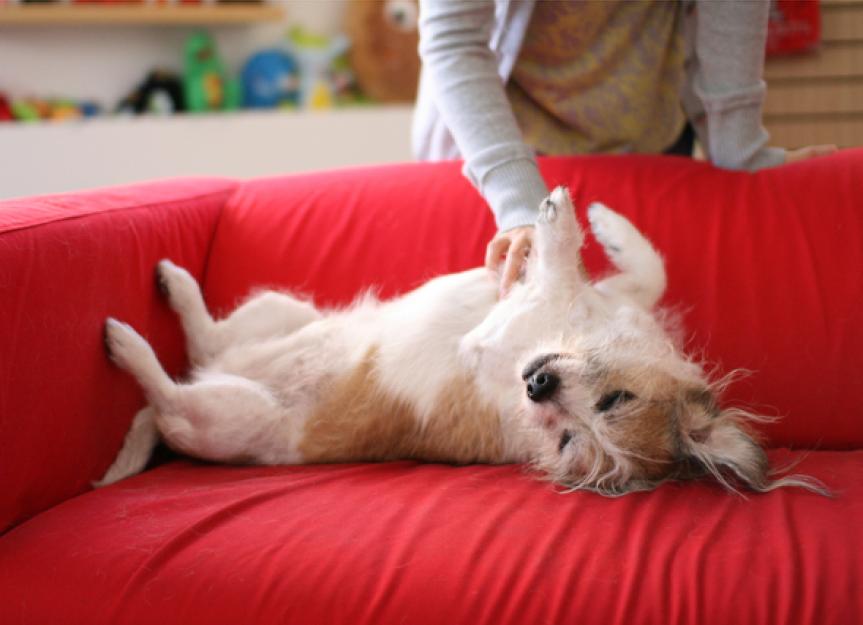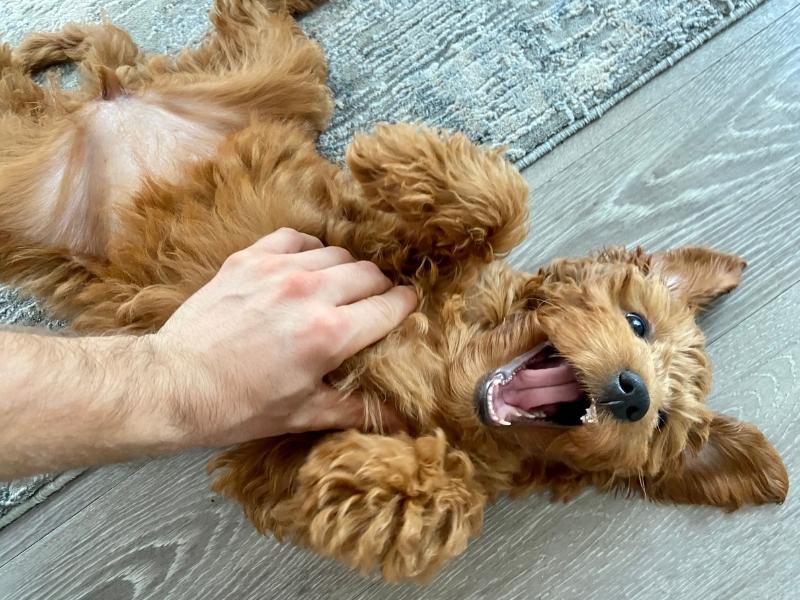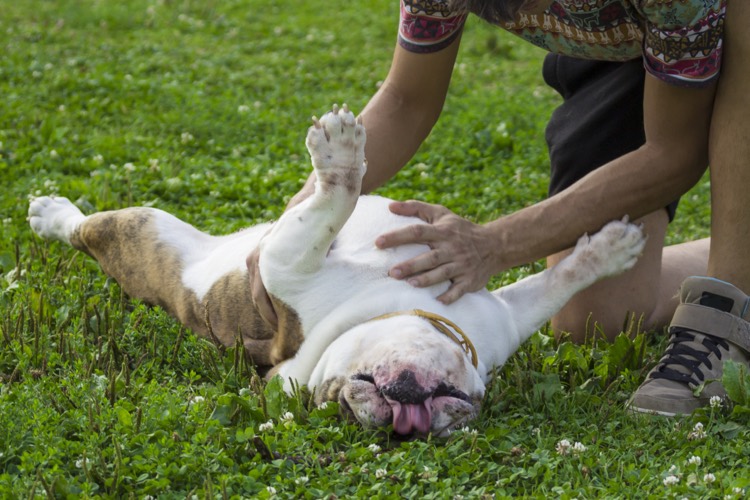
A major and rewarding aspect of being a pet owner can be cuddling. Most of our pets seem to enjoy having their bellies massaged. They love to lay on their backs with their tails moving and tails waving as they wait for belly rubs. What’s the reason? What’s so wonderful about having their stomachs rubbed?
Submissive Behavior in contrast to. Looking to get a belly Rub
Dogs show their belly towards us due to two primary motives: as an expression of respect, and as a way to request a belly rub. It’s crucial to know exactly what your animal is saying prior to going in to pet them!
Dogs who exhibit submissive displays (also known as an appeasement show) attempt to ease social tension by demonstrating that they aren’t an issue. When petting a dog in an appeasing or submissive manner can cause the dog to become more anxious, as you’re touching him in extremely sensitive areas on his body!
Dogs who really would like to rub their belly typically show these body language indications:
- Overall the body is loose and wiggly. postures
- Mouth: open, relaxed mouth. You might even notice their tongue floating around
- Eyes: Squinty or open Bright, but not necessarily looking at anything.
- Tail A tail that is relaxed and wagging
- Vocalizations: quiet, ha-ha sound when the “laugh,” or a gentle panting sound, or a silent
A dog engaging in submissive or calming behavior will appear like this:
- Overall: tight and low body postures – they could move, crouch, or freeze. They may also get tense.
- Lips pulled back in the form of a “fear grinning” or mouth and lips closed, can be seen plenty of lip-licking and tongue-flicking
- Eyes wide open, gazing out to the distance or showing their whites when they look at you, but not turning their heads, or eyes will be narrow and tense.
- Tail: could be either still or wagging however there will be tension at the bottom of the tail, and the tail could be pulled back.
- Vocalizations: soft or quiet whining
Many people find it easier to observe the dog’s mouth and tail, but be aware that a wagging tail does not mean a dog is happy. A stiff tucked quick tail wag isn’t equivalent to a loose, full-body tail wag!
Why do Dogs Like Belly Rubs?

It’s difficult to know precisely why dogs are drawn to belly rubs. We cannot ask our dogs! Because dogs aren’t able to easily rub their stomachs and are more likely to depend on humans to help.
A lot of dogs also love rolling on grass or carpet to get their backs scratched. It is reported that a lot of dogs love the belly rub, while the back of their paws is also scratched. They are able to reach their necks, shoulders, and even their faces using their hind legs. However, they don’t have any method to scratch their stomachs!
Imagine how great it is to feel having people rub or rub an area that isn’t yours to reach. Dogs are awe-inspiring to receive help by rubbing their belly!
What to do for a Wonderful belly Rub to a dog
Not all dogs enjoy belly rubs. Many dogs don’t need to be rubbed on the belly, either. If your dog isn’t a fan of belly rubs or doesn’t want one at the moment there’s nothing to worry about. There are some dogs who just don’t like it, or perhaps your dog isn’t feeling it.
Most dogs only appreciate belly massages in the early morning when serotonin levels are at their highest or when they’re at their most relaxed.
Your dog will enjoy belly rubs more by understanding how to give them a perfect belly rub. These are the steps for giving a great belly rub that is adapted from the pat-and-pause method to pet dogs:
Check to see if your dog is wanting the belly rub. Look at the body language mentioned above. When your pet doesn’t appear to be wanting an immediate belly rub Don’t force it. One of the best ways to get your pet to be a loyal pet and enjoy belly rubs is by respecting the moment you say “No Thank you.”

- Then, kneel down. Maintain your body language relaxed and relaxed in the beginning.
- Rub your belly! Try open-palmed, fingernails-in circular, or even patting movements. After 3 to 5 minutes, stop the patting.
- Check out what your dog is doing next. If he is pawing at you, holds his position, or in any way indicates that he’d like to be petted Go back to get more If you leave and he gets up then belly rubs are done.
- Try changing the type of rubbing you do and see what outcomes you can get. You might be surprised to discover a different kind of belly rub your dog will love even more.
One of the most crucial things to do is be respectful of your dog’s wishes and be sure to pet him the way he would like to be petted. If you are able to read the body language of your pet you’ll ensure that your pet enjoys belly rubs greater than she already loves!